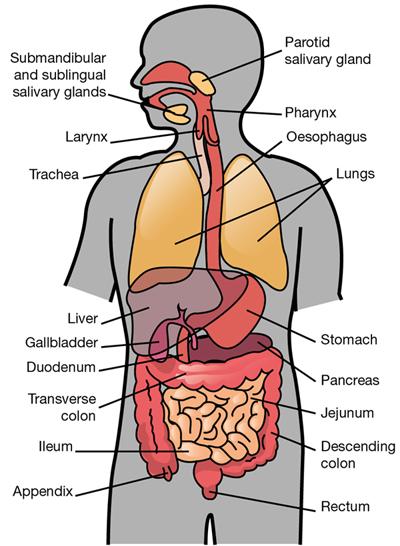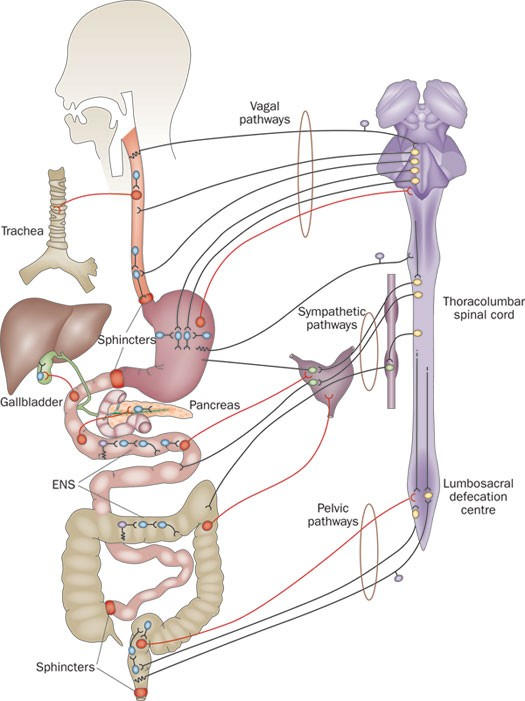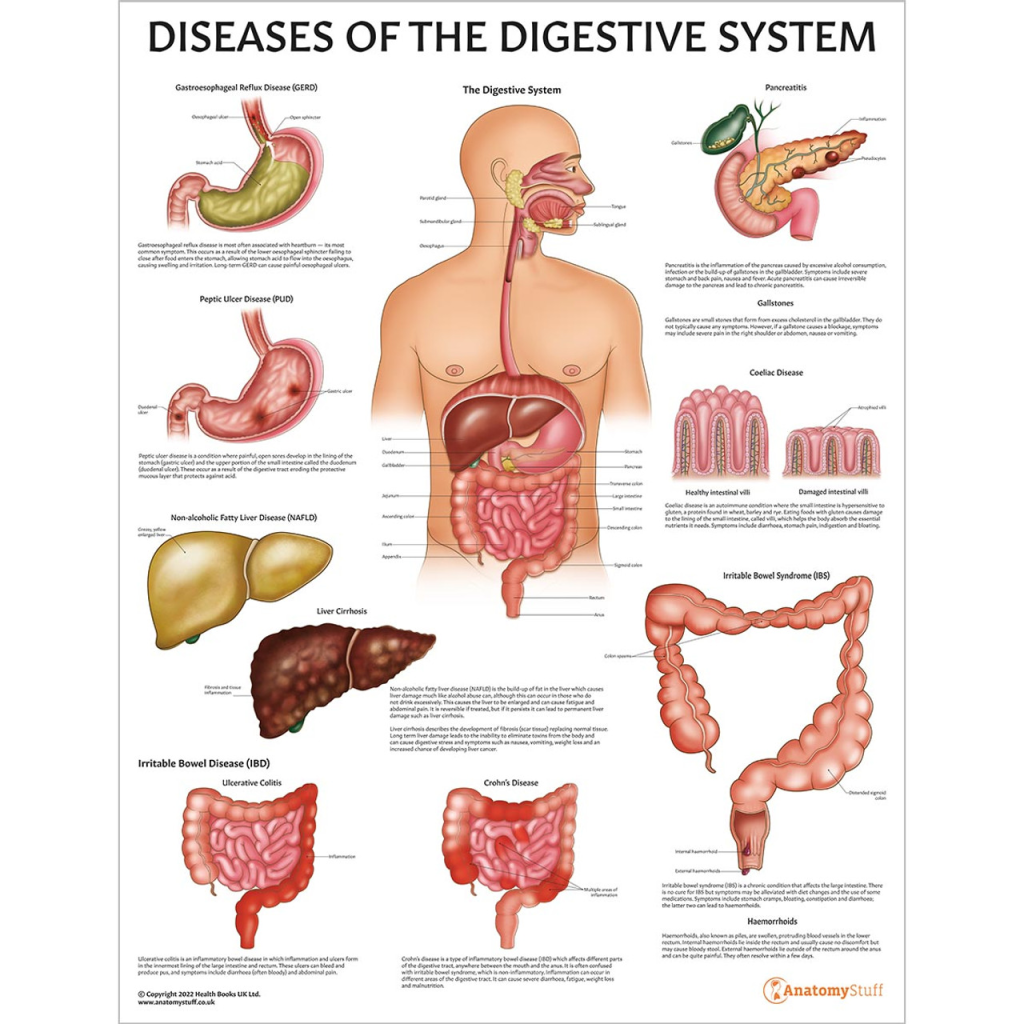8.1 Gastrointestinal (GI) Pharmacology Introduction
Gastrointestinal Pharmacology Introduction
The digestive system has four main functions and is the site for numerous common health conditions.
This module will give an overview of the functions of the gastrointestinal system, neuronal and hormonal control of the GIT and the pharmacology of gastrointestinal drugs for the treatment of some common conditions. We will look at the mechanisms of gastric secretions, common pathologies associated with gastric acid and the pharmacotherapy of dyspepsia, GORD and PUD. Additionally, we will review the mechanisms of emesis and discuss the pharmacology of drugs involved in the management of nausea, vomiting, constipation and diarrhoea.
Learning Outcomes
By the end of this module, students should be able to demonstrate and apply knowledge of:
- The functions of the digestive system
- Neuronal and hormonal control of the GIT
- Common conditions of the GIT.
The digestive system has 4 main functions
The digestive system includes the gastrointestinal tract (GIT) and accessory organs of digestion. The GIT is also known as the alimentary canal and is divided into two main sections: the upper GI tract and the lower GI tract. The GIT is controlled by both intrinsic and extrinsic neural mechanisms. The digestive system has four main functions: motility, secretion, digestion and absorption.

📚 Read/Explore
Read: “The gastrointestinal tract” in Chapter 31 Drugs Affecting Major Organ Systems (page 395-396) in Rang and Dale’s Pharmacology 9th Ed.
The GIT is under dual neuronal and hormonal control
Intrinsic neural control of the GIT is via the enteric nervous system (ENS). It is made up of several neural circuits and neurons and it is often referred to as the ‘second brain’ as it can operate independent of the CNS. The ENS is a web of neurons embedded in the wall of the gastrointestinal system, stretching from the lower third of the oesophagus right through to the rectum.
Locally, the ENS can control motor functions (eg peristalsis), blood flow, mucosal transport and secretion. It can also modulate immune and endocrine functions. The ENS works in cohesion with the CNS for other “whole-body” functions. For example, both the ENS and CNS are involved in the vomiting reflex and the sensations of hunger or satiety.
It is important to note that many gastrointestinal functions are under dual neuronal and endocrine control. Neurotransmitters and hormones that are found in the ENS include acetylcholine (ACh), norepinephrine (NE), serotonin (5-HT), gastrin, histamine, endorphins, nitric oxide and substance P.

📚 Read/Explore
Read: “Neuronal control of the gastrointestinal system” in Chapter 16 Drugs Affecting the Upper and Lower Gastrointestinal Tract (page 319) in Pharmacology for Health Professionals 6th Ed.
The GIT is a site for common health conditions
Numerous common health conditions affect the GIT. They may affect the upper or lower GIT. Disorders that affect the upper GIT include dyspepsia, gastro-oesophageal reflux disease (GORD), gastritis, ulcers, Barrett’s oesophagus, hernias and some cancers. Some disorders that affect the lower GIT include chronic diarrhoea, constipation, Crohn’s disease, Ulcerative colitis, haemorrhoids, fissures and cancers. In the following lectures we will take a closer look at:
- Dyspepsia
- Gastro-oesophageal reflux disease (GORD)
- Peptic Ulcer Disease (PUD)
- Nausea and vomiting
- Constipation and diarrhoea.


 Lecture Notes
Lecture Notes